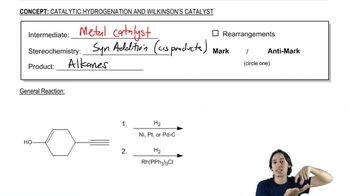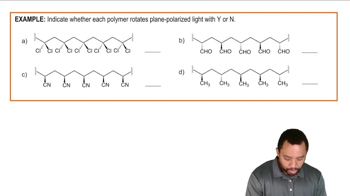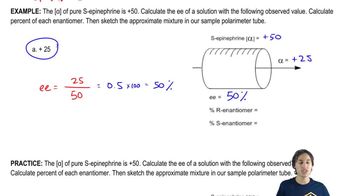Draw the products, including their configurations, obtained from the reaction of 1-ethylcyclohexene with the following reagents:
b. H2, Pd/C

 Verified step by step guidance
Verified step by step guidance Verified video answer for a similar problem:
Verified video answer for a similar problem:



 5:21m
5:21mMaster General properties of catalytic hydrogenation. with a bite sized video explanation from Johnny
Start learning